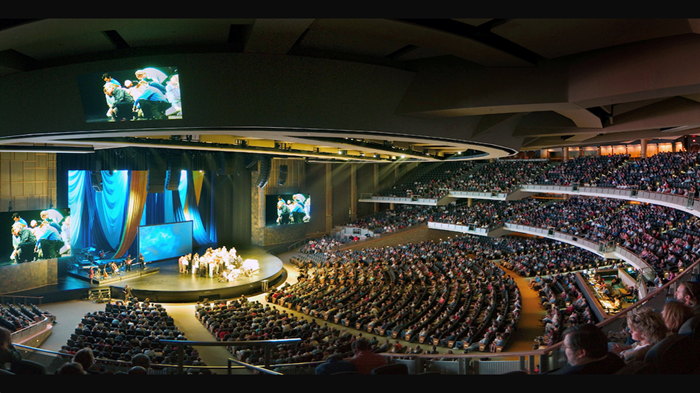The Legacy of Willow Creek 1

When in the middle of the 21st Century a church historian looks back on the history of the Church in the 20th Century, one feature that will stand tall in its grotesque uniqueness will be America’s megachurch movement that swallowed up neighborhood churches and established a model for churches that discouraged hundreds of small church pastors.
In the middle of this story about the 20th Century evangelicalism will be Willow Creek Community Church [WCCC] and its innovative seeker-friendly church services. At the heart of Willow Creek’s innovation was Bill Hybels. That story will be told in its fullness, which means readers of that day will hear of a Saul-like crisis.
At that time Willow’s and Hybel’s story will be clearer than it is today but I want to anticipate what might be said at that time by assessing Willow’s legacy now.
“Legacy” is the term of focus because what Willow was is not what it is now. It is presently a shell of its former self: attendance decreases monthly, giving is diminished, employees are being laid off, and Willow’s outsized influence has disappeared. Yet, WCCC had its time as an international stage and we can assess its legacy, as well as its enduring features. Much can be learned from the Willow story.
When I sat down with my daughter, Laura Barringer, to write A Church called Tov, it was the Willow story that became the original working space for seven dimensions of tov (goodness) that resist seven elements of toxicity. We added to the Willow story stories from many other churches – from Harvest Bible Chapel to the Southern Baptist churches to Sovereign Grace Ministries and the Roman Catholic Church. But for us the Willow story – its history, its tragedy, its legacy – became the consuming lens through which we were able to draw together redemption themes for churches. Willow, in short, needed more “tov” (goodness) and less toxicity. We will begin with its tov.
Seeker Friendly Services
WCCC created a world-wide interest in “seeker-friendly services,” a type of church service easy on ”unchurched Harry and Sally.” What Hybels and his innovative, courageous team of leaders formed was a style of worship that was friendly to the unchurched as well as to the formerly churched.
Relevancy to contemporary concerns – from politics to marriage to family to finances to moral challenges – would be the door to evangelism, while it would also, ironically, turn the platformed speakers into authentic humans with real struggles and pains and depressions and doubt. Authenticity has always been cultivated by WCCC as an image. When most churches were still traditional in all ways – sermons, job descriptions, architecture, a cross behind the pulpit, choirs in robes – WCCC courageously found other ways: sermons were more casual, job descriptions creative, architecture that looked like a movie theater with theater seating, no cross, no baptismal, no choirs in robes. Instead, we found platform singers that were physically shaped and dressed like rock stars. Instead of preaching through books of the Bible, which was the custom of many evangelical churches and the heart of seminary-trained preaching classes, Hybels went after crowd-attracting hot topics.
The audience was no longer sinners or saints but seekers, people wondering about God. So what was attractive and inoffensive to the seeker, instead of the churchgoer, determined the content of the talks from the platform.
One of the most courageous elements of early WCCC was an egalitarian approach to male-female relations and of the affirmation of women preachers, teachers, and elders. Nancy Beach’s well-known and much-loved sermons at Willow are but one example of the support of women in ministry. The decision to hold up women as preachers influenced churches throughout the world, but was just as much – if not more – a step in the direction of relevancy. It made a statement at the right time in American history: women’s equality in the church corresponded to the Equal Rights Amendment.
This must be said: since Nancy Beach resigned WCCC has chosen not to hire a woman teaching pastor. The new leaders at WCCC now seem to this observer uncommitted to women teaching pastors. What was once a courageous conviction has become a bygone era at WCCC.
Church after church and preacher after preacher followed Willow’s attractional model and began teaching about hot topics. Pastors stopped dressing the part – no clerical collars, no suit-and-tie – and the physically attractive became the future images of the megachurch. Heads and bodies became godlike as Willow began to project images onto stadium-sized screens. Speakers were taught how to look into the camera so they would appear to be looking at the doubting, skeptical seeker sitting in the nosebleeds.
Everything was designed to be culturally relevant and as inoffensive as the gospel can be (and still be called the gospel). Bill Hybel’s easy-to-understand gospel was the Bridge Illustration gospel. Humans in one place, God in another, a huge chasm between, with the cross bridging the gap, and with faith and coming forward as the means of getting unchurched Harry and Sally across and on to God’s team.
Thousands and thousands of believers today are believers because of Willow’s influence on being more seeker-friendly and -sensitive.
The seeker-friendly model, tied as it was into the church growth movement as well as the attractional model of church, has had its day. Many have learned to talk gospel and talk church and talk God in ways that are sensitive to those who did not grow up in churches. For this we can all be grateful.
Tomorrow: Performing Arts
Jesus Creed is a part of CT's
Blog Forum. Support the work of CT.
Subscribe and get one year free.
The views of the blogger do not necessarily reflect those of Christianity Today.




















